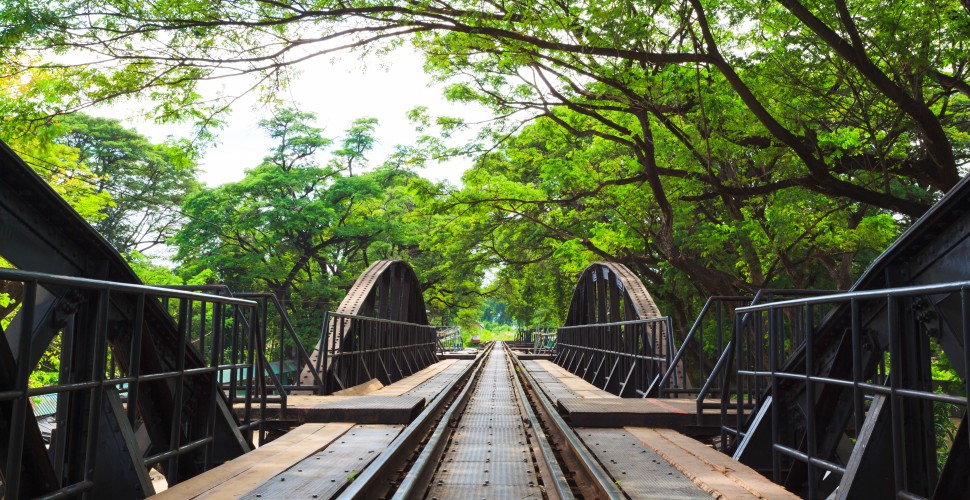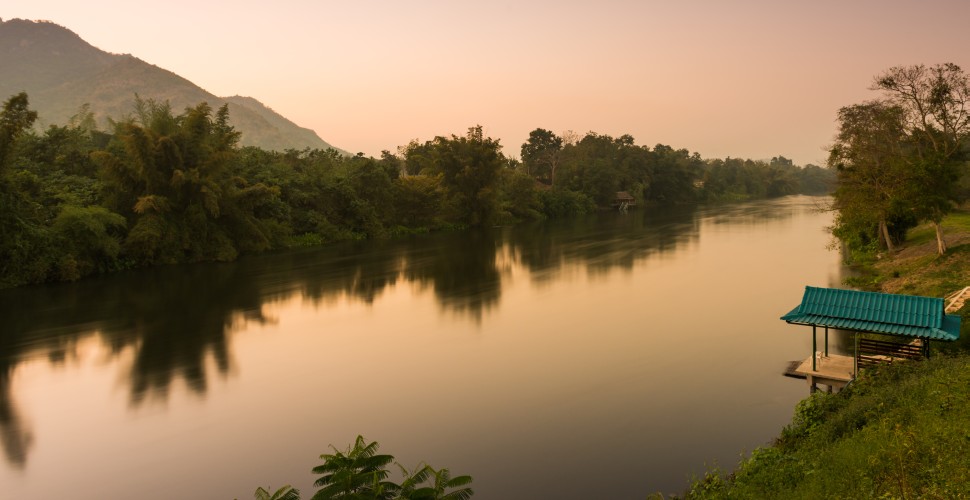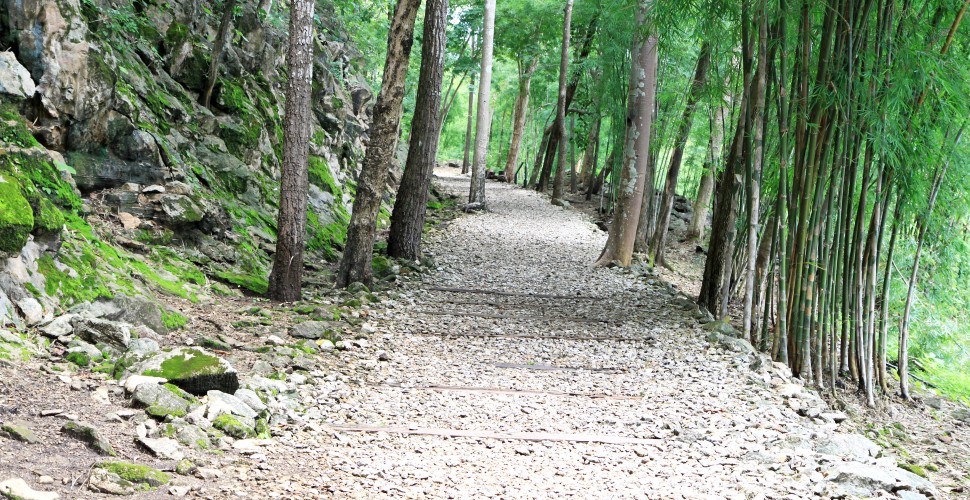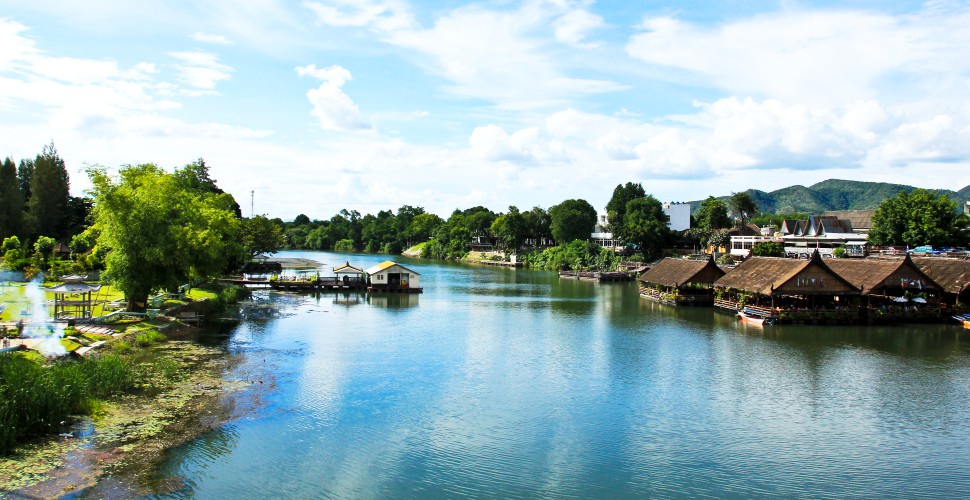The Bridge on the River Kwai, Thailand: Sorting Fact from Fiction
I didn't get the chance to watch Colin Firth and Nicole Kidman in The Railway Man before I left the UK for my latest trip – but I did manage to do something even better: I got to visit the Bridge on the River Kwai – a key feature of the Burma Railway that is central to the film – in person.
Here comes the history:
It's World War Two, 1943. After invading and sweeping through South East Asia in order to secure natural resources from the European colonies, the Imperial Japanese Army set about building a railway from Bangkok to India. The British had considered such a project decades earlier, but rejected it due to the mountains and jungle that stood in the way. The Japanese wanted to build it to supply their forces in Burma – in preference to using sea routes which were fraught with danger. Approximately 90,000 Asian labourers died in the railway's construction, along with 12,399 Allied prisoners of war. Little wonder then that it was dubbed the ‘Death Railway'.
Cinematic Liberties
I vividly recall watching David Lean's 1957 classic The Bridge on the River Kwai as a child; the thrilling ending where a mortally wounded Alec Guinness staggers towards the dynamite plunger attached to the bridge is unforgettable. Does he manage to destroy the structure that he and his men worked so hard to build? I won't spoil it if you haven't seen it yet.
But as entertaining as the film is, it took a number of liberties with historical fact. The bridge in the film never really existed, although two wooden bridges like the one depicted were built during the war.
The bridge that the Thai tourism authorities want us to believe is ‘that' bridge is in fact made of steel and concrete. Additionally, the section of river was actually called the Mae Klong – but the Thais had a great solution for this problem: they simply renamed the river Khwae Yai (Big Kwai)!
 Death Railway, Kanchanaburi, Thailand
Death Railway, Kanchanaburi, Thailand
But cinematic liberty with the facts doesn't detract from the power of the bridge. It represents the work of thousands of British and Commonwealth prisoners of war, not to mention thousands more Asian slave labourers. Many of these men died in what was a simple, shocking case of slave labour. If the individuals didn't die of cholera, beri beri, dysentery or general malnutrition, they would die of exhaustion.
Bangkok to Kanchanaburi by Train
The bridge is located in the town of Kanchanaburi, just a two-and-a-half hour train ride from Bangkok. The rolling stock of the Thai State Railway is perhaps only a couple of decades ahead of World War Two, but at 100 baht (£2), one cannot complain. You can only travel in third class carriages (nothing higher is available), but these are clean and comfortable and there are plenty of food and drink vendors moving up and down the aisles to keep passengers refreshed.
I was still suffering jet lag due to my flight from the UK, so could not summon the strength to visit the bridge until the day after my arrival.
But it was certainly worth the effort. It's an impressive bridge, not least because it was built so long ago and is still in use. It attracts many thousands of tourists each year, and so is cherished by the local Thais.
 Death Railway, Kanchanaburi, Thailand
Death Railway, Kanchanaburi, Thailand
The River Kwai at Sunset
Apart from the history, I was impressed by the beauty of the river itself, a wide, slow moving stretch of water lined with all manner of floating restaurants and guest houses. Beyond is thick jungle and dramatic, rocky mountains. The view is especially attractive as the sun goes down, so make sure you get a seat in a riverside eatery in plenty of time if do visit the area. Every evening the whole northern bank is washed in a golden light that is truly spellbinding.
 River Kwai at sunset, Kanchanaburi, Thailand
River Kwai at sunset, Kanchanaburi, Thailand
Further north is Hellfire Pass. This is an awe-inspiring gap cut into a mountain by the labourers and POWs, carved out to allow the train track to be laid. I decided to rent a scooter (200 baht/£4 a day) and make the journey myself. At around 40km (80km round trip), it was a long distance to travel by scooter, and if I ever did it again I might well go by taxi or on one of the many organised bus trips.
 Hellfire Pass, Death Railway - the II World War Memorial in Kanchanaburi, Thailand
Hellfire Pass, Death Railway - the II World War Memorial in Kanchanaburi, Thailand
Thinking of visiting?
For those with an interest in history, or who simply wish to visit a tranquil part of Thailand, visiting the town of Kanchanaburi and the Death Railway is highly recommended. Accommodation ranges from budget (as low as £3 for a simple room) to high end (£20 and upwards). The best time of year to visit is from December to February, when the climate is cooler and less humid. Around this time the nights are chilly and daytime temperatures hit around 25 degrees, which is what Thais call winter!
 River Kwai, Kanchanaburi, Thailand
River Kwai, Kanchanaburi, Thailand